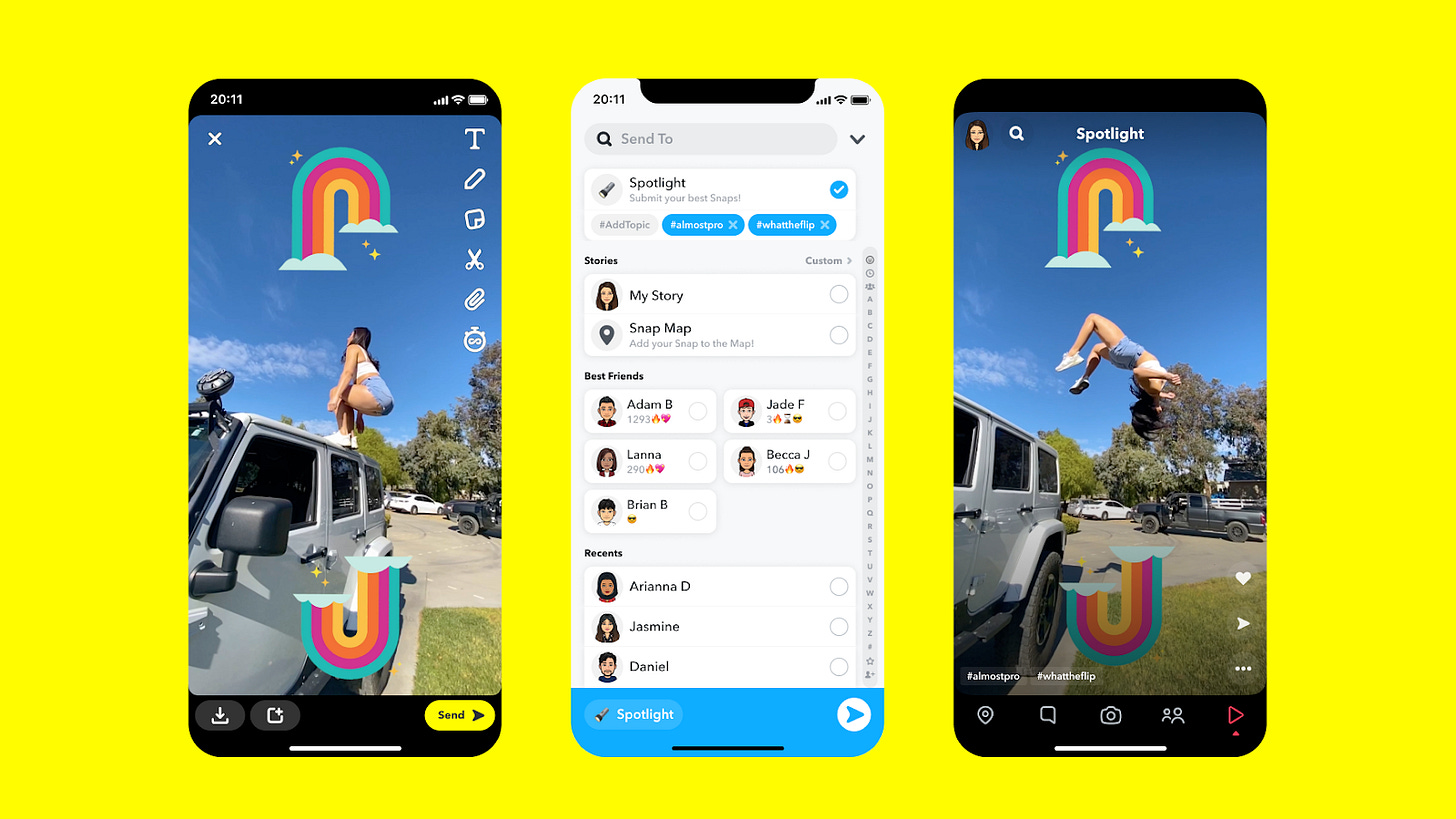I’m not a great runner. I’ve never set course records. I’ve never been recruited to run anywhere. I’ve only ever made it to the podium in the smallest of races. Despite all of that, I still run. I run because of the love of running. I love being outside and seeing the world pass by just by the power of my own legs. It often gives me time to catch up on books and podcasts and even the occasional friend. However, despite all of that, when I step up to a start line, I still find it incredibly difficult not to try to keep up with the front runners, even if just for a short while. If I give in to this temptation, I know I’m going to destroy my legs too early and ruin my race. But, the temptation is still there.
Companies often fall into the trap of chasing competitors with the same misplaced urgency I feel when trying to match strides with faster runners. They lunge after each new feature their rivals release or rush to copy the latest pivot, diverting energy from what really matters. In doing so, they wear themselves out, lose sight of their unique value, and drift away from the people they exist to serve. The best businesses I’ve worked with resist that urge. They commit to their own course, driven not by the speed of others, but by a deep understanding of their customers and the problems worth solving.
Few rivalries in the tech world have been as fast-moving and high-stakes as the battle between Snapchat and TikTok. What began as two platforms with distinct identities quickly escalated into a feature-for-feature arms race, with Snapchat scrambling to reclaim attention as TikTok rewrote the rules of engagement for the next generation. In November 2020, Snapchat launched Spotlight, a feature designed to rival TikTok's short-form video format. To attract creators, Snapchat offered a substantial incentive: $1 million per day distributed among top-performing videos. This strategy led to a surge in content submissions, with creators uploading over 175,000 videos daily.
Initially, this approach seemed promising. Snapchat reported that Spotlight had amassed 125 million monthly active users within a few months of its launch. However, sustaining this momentum proved challenging. As the novelty wore off and competition intensified, Snapchat began reducing the daily payouts. By 2022, the company had shifted from daily to weekly, and eventually to monthly payouts, significantly decreasing the financial incentives for creators.
This reduction in creator compensation coincided with broader financial challenges for Snapchat. In the third quarter of 2022, the company reported a net loss of $360 million, attributing part of this downturn to increased competition and changes in advertising dynamics. Despite efforts to monetize Spotlight through ad revenue sharing and other initiatives, the feature has struggled to match TikTok's dominance in the short-form video space.
Snapchat's experience with Spotlight underscores the risks of reactive strategies that prioritize mimicking competitors over focusing on unique value propositions and customer needs. While the initial surge in engagement was notable, the long-term sustainability of such approaches remains questionable.
When a competitor takes off, especially as explosively as TikTok did, it’s tempting to assume they’ve discovered a secret formula. This belief can become a quiet obsession within companies: a creeping sense that “they know something we don’t,” or worse, “they’re doing it the right way, and we’re behind.” That assumption can lead teams to chase not just a competitor’s product ideas, but their entire way of thinking. It creates a mythology around their moves and masks the real differences in market position, user base, and long-term goals.
Snapchat’s scramble to copy TikTok’s short-form video feed with Spotlight is a prime example. The logic was simple: if TikTok is winning user attention through an endless scroll of algorithmically surfaced creator content, then that must be the right direction for everyone. But this mindset ignored the underlying truth, TikTok’s core advantage wasn’t just the format. It was the culture. TikTok had cultivated a deeply participatory, creator-first ecosystem built on music, memes, and low-barrier content creation. It wasn’t just a product; it was a new entertainment language. Snapchat, born as a private messaging tool for ephemeral communication between friends, didn’t share that DNA.
This is where the myth of the one right way is most dangerous. Two companies can succeed by serving very different user needs, but only if they understand what truly makes them valuable. By chasing the “winning” playbook of another platform, a company often abandons its own identity. The problem isn’t just imitation. It’s imitation without introspection.
The lesson here is simple, but hard to practice: just because something works for someone else doesn’t mean it will, or should, work for you. Product strategy isn’t universal. It’s contextual. The right answer starts not with your rival’s roadmap, but with your customer’s reality.
While competitors may grab headlines with flashy features or viral growth hacks, long-term success comes from a quieter, more durable source: relentlessly solving real problems for real customers. Companies that invest in deeply understanding their users, what frustrates them, what delights them, what keeps them coming back, build an engine of loyalty and innovation that no copycat race can replicate.
Consider Spotify. While rivals like Apple Music matched its catalog and undercut it on pricing, Spotify pulled ahead by addressing the emotional and behavioral needs of its listeners. It wasn’t just about offering music, it was about discovery, personalization, and habit formation. Features like Discover Weekly, Wrapped, and Blend were not reactions to competitors; they were born from observing how people wanted to relate to music. The insights came from user behavior and feedback, not market positioning. As a result, Spotify created an experience so tailored that switching felt like a downgrade, no matter what the competition offered.
Or take Airbnb, which in its early days faced skepticism from nearly every angle. Instead of chasing hotel-like features or mimicking traditional travel sites, the company zeroed in on its hosts and guests, understanding trust, safety, and community from the ground up. This customer-first approach allowed Airbnb to reimagine what hospitality could mean, carving out a category of its own rather than trying to out-hotel the hotel chains.
This kind of advantage is hard to see on a competitor comparison chart. It doesn’t always show up in demos or quarterly feature releases. But it compounds over time. When companies build systems to regularly learn from users, through interviews, support logs, usage data, and live experimentation, they begin to anticipate needs instead of reacting to market noise. They generate insights others can’t see, leading to innovations that feel obvious in hindsight and impossible to replicate at speed.
Customer problems are the most renewable resource a company has. As long as you stay close to your users and keep asking the right questions, you’ll never run out of meaningful work to do. And in a landscape where products are easy to copy, it’s this deep, specific knowledge of your customer that forms the strongest moat.
Staying focused on customer problems sounds straightforward, until the moment it’s not. The real test comes when a competitor launches something flashy, your board starts asking why you haven’t rolled out a freemium tier, or a high-profile team pitches a feature “everyone else is doing.” That’s when strategy stops being about vision and starts being about discipline. And discipline often looks like saying no.
The hardest part of building great products isn’t coming up with new ideas, it’s saying ‘no’ to good ideas. Leaders must be willing to say no to trends, to features that don’t serve their users, and even to big opportunities that pull focus away from what matters most. Not because those ideas are bad, but because they’re not aligned. Strategic clarity means being willing to disappoint some people in order to deeply serve the right ones.
Take Basecamp as an example. While not the most wildly successful business they did report growing to $280M in revenue in 2024, up from $215.6 million in 2020, serving over 252,000 customers worldwide. For years, they’ve been unapologetic about refusing to chase feature parity with more bloated project management tools. While competitors layered in chat, kanban boards, and AI widgets, Basecamp kept its product deliberately minimal. Critics saw this as stubbornness; loyal customers saw it as trust. Basecamp knew exactly who they were building for, and more importantly, who they weren’t.
Or look at Stripe, that is a very successful business. In 2024, the company reported processed $1.4 trillion in total payment volume, marking a 38% increase from the previous year and representing approximately 1.3% of global GDP. This is a company that built its reputation by solving the hard, unglamorous problems of online payments. Stripe has grown massively not by launching every possible fintech product, but by deliberately sequencing what they offer based on the needs of their developer-first user base. Their roadmap reflects restraint. Every ‘yes’ is earned by a deep understanding of what will truly help their customers grow.
This kind of focus is uncomfortable. It requires telling smart people with good ideas, “Not now,” or even “Not ever.” It demands letting competitors sprint ahead in certain directions while you walk steadily in your own direction. But over time, it’s the companies that stay grounded in their purpose, and say no with clarity, that build the most enduring value.
In a noisy, reactive world, strategy is the ability to stay calm and focused. It’s knowing your race, your pace, and your purpose. And it’s having the courage to run it, without glancing sideways. The most enduring companies aren’t the ones that chase the competition, they’re the ones that stay grounded in their purpose and obsessed with their customers. The race worth running is the one that solves real problems, builds real trust, and creates real value. So take a breath, look ahead, and commit to your own course. Your customers are counting on you to lead, not follow. Run your own race.





